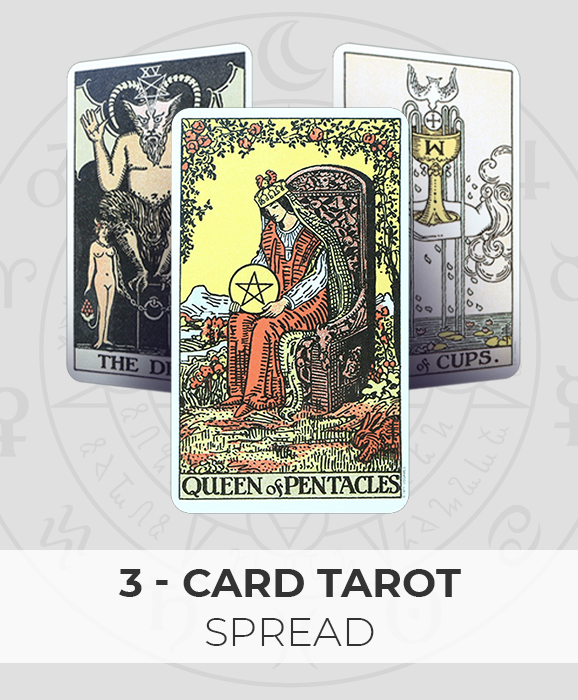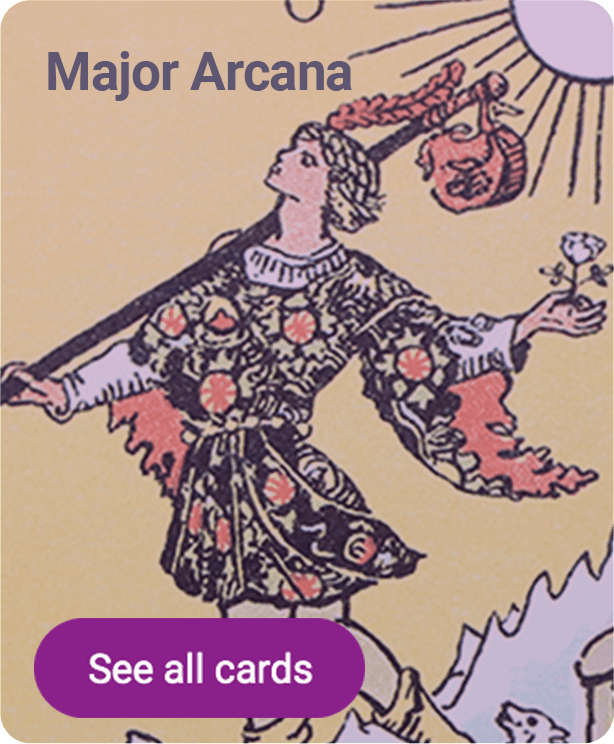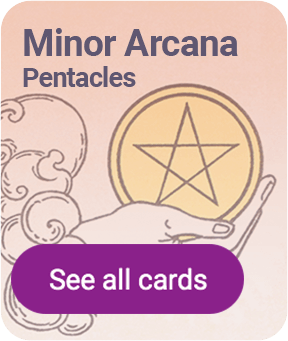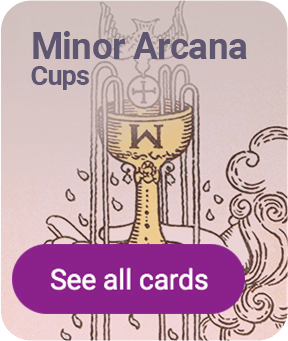Tarot Cards Guide
Welcome to our Tarot Card Guide where you will find everything you need to know about Tarot cards, their history, how they are used, and a complete list of the Rider-Waite deck with the meanings of each of the 78 cards.
The Origins, Mystery, and Wonders of the Tarot
There are countless theories regarding the origins of the magical Tarot deck. They are all partly valid, yet not one of them gives us a complete explanation. Their many symbols make it difficult to pinpoint the cards’ exact origin – there’s ample Kabbalah symbolism including Hebrew letters, but there are also Pagan, Christian, and even Eastern mystical symbols.
Even the root of the word “tarot” has been debated widely – some say it comes from the Italian word “trionfi” meaning triumph, others say it comes from another Italian word “tarocchi” which has no known meaning other than the one related to the cards. Maybe it was derived from the name of an Italian river, Taro. There have been occultists who claimed the name comes from Arabic or ancient Egyptian, as playing cards were imported into Europe from Egypt.
Some occultists claim Tarot is a mix of everything – that it evolved using humanity’s most advanced mystical heritages over time. The modern Tarot deck as we know it appeared in Italy in the 15th century, but because each deck had to be hand-painted, only the royal and aristocratic families could afford to have them. The Visconti family was one such family – today, their centuries-old Tarot cards are on display in various locations around the world.
It’s been said that these families didn’t use the cards for divination. It might be true, or it could be that these families hid their psychic and spiritual activities for fear of backlash from the church. It was only after the Renaissance swept through Europe that Tarot found freedom of expression – it became a part of all strata of the society and was openly used for divination.
In 1785, Etteilla, a French occultist, became known as the first professional Tarot reader. Not only did he popularize the use of the cards but he also explored the deck’s connections to astrology and the four elements (earth, water, fire, air). More than a century later, Carl Jung connected some of the cards to archetypes and concluded that Tarot could play a key role in psychoanalysis. Many teachers have since claimed that the cards could be meditated upon to create new realities in our lives.
The classic Tarot deck, known as the Waite-Rider-Smith deck, contains 78 cards, and separated into two sections - the Major Arcana and the Minor Arcana.
Even the root of the word “tarot” has been debated widely – some say it comes from the Italian word “trionfi” meaning triumph, others say it comes from another Italian word “tarocchi” which has no known meaning other than the one related to the cards. Maybe it was derived from the name of an Italian river, Taro. There have been occultists who claimed the name comes from Arabic or ancient Egyptian, as playing cards were imported into Europe from Egypt.
Some occultists claim Tarot is a mix of everything – that it evolved using humanity’s most advanced mystical heritages over time. The modern Tarot deck as we know it appeared in Italy in the 15th century, but because each deck had to be hand-painted, only the royal and aristocratic families could afford to have them. The Visconti family was one such family – today, their centuries-old Tarot cards are on display in various locations around the world.
It’s been said that these families didn’t use the cards for divination. It might be true, or it could be that these families hid their psychic and spiritual activities for fear of backlash from the church. It was only after the Renaissance swept through Europe that Tarot found freedom of expression – it became a part of all strata of the society and was openly used for divination.
In 1785, Etteilla, a French occultist, became known as the first professional Tarot reader. Not only did he popularize the use of the cards but he also explored the deck’s connections to astrology and the four elements (earth, water, fire, air). More than a century later, Carl Jung connected some of the cards to archetypes and concluded that Tarot could play a key role in psychoanalysis. Many teachers have since claimed that the cards could be meditated upon to create new realities in our lives.
The classic Tarot deck, known as the Waite-Rider-Smith deck, contains 78 cards, and separated into two sections - the Major Arcana and the Minor Arcana.
Major Arcana
The word “arcana” means “secrets.” As such, the Major Arcana cards reveal major secrets. When one of these 22 cards appear in your psychic reading it usually indicates something important and of spiritual significance. Known as the Trump cards, they point out life-changing situations, important karmic lessons, and stages throughout your life's spiritual journey.
Minor Arcana
The Minor Arcana cards reveal our “smaller” secrets and are broken into four different suits:
Suit of Cups
Suit of Pentacles
Suit of Swords
Suit of Wands
When one of these 56 Tarot cards appear in a psychic reading they indicate day-to-day issues, temporary lessons, and short-term influences.
Suit of Cups
Suit of Pentacles
Suit of Swords
Suit of Wands
When one of these 56 Tarot cards appear in a psychic reading they indicate day-to-day issues, temporary lessons, and short-term influences.













